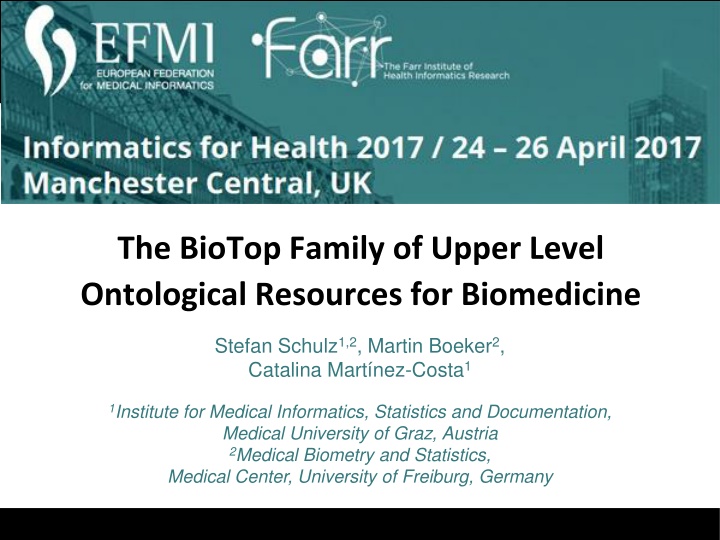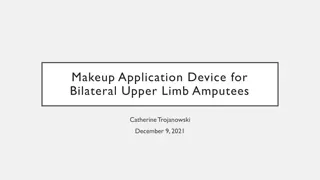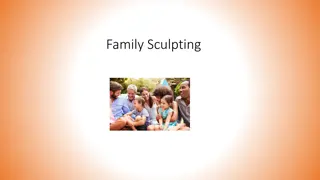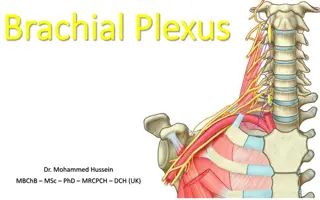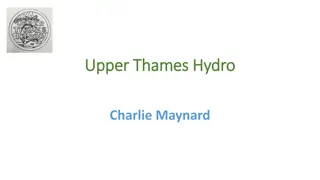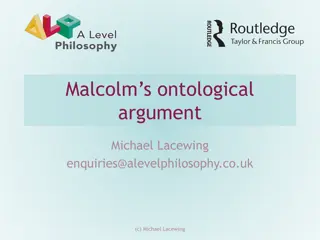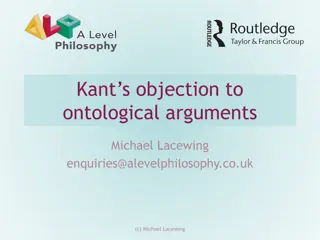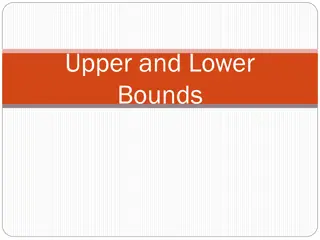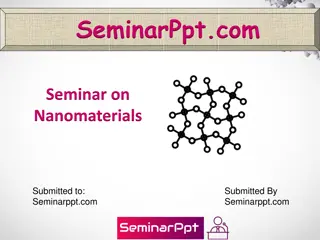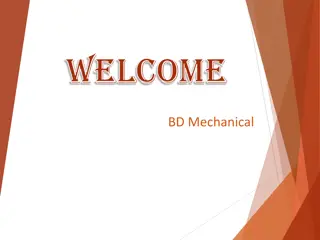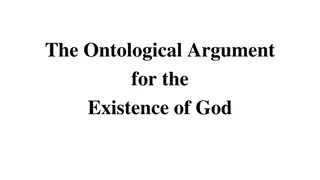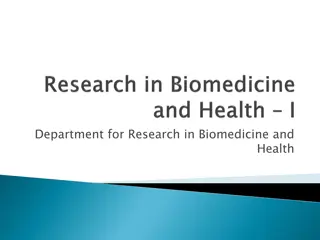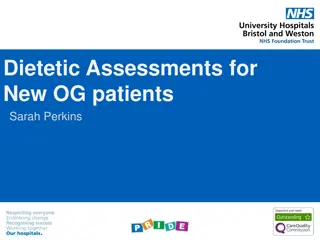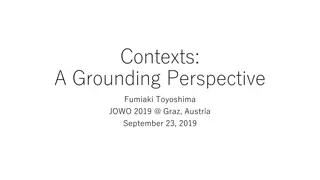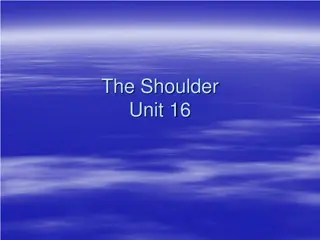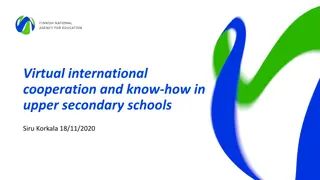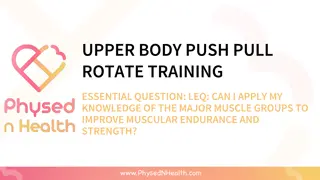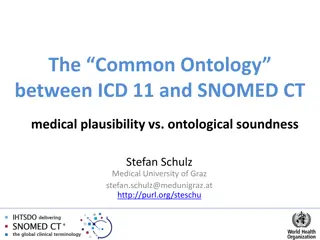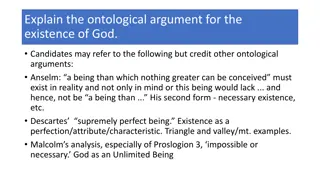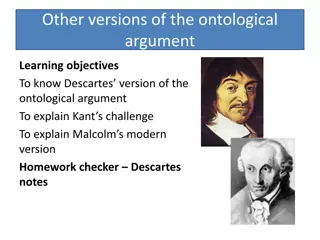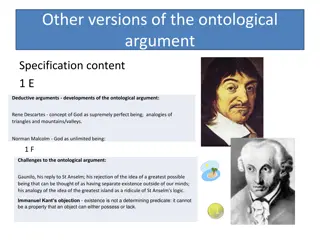The BioTop Family of Upper-Level Ontological Resources in Biomedicine
Formal ontologies play a crucial role in biomedicine, offering structured frameworks to represent knowledge. This article delves into the significance of upper-level ontologies, the functions of formal ontologies, and what they do or don't represent. It discusses the necessity of BioTop in the ontology ecosystem, highlighting the use of logics and popular description logics in formal ontologies. Explore the complexities and applications of formal ontologies in the realm of biomedicine.
Download Presentation

Please find below an Image/Link to download the presentation.
The content on the website is provided AS IS for your information and personal use only. It may not be sold, licensed, or shared on other websites without obtaining consent from the author.If you encounter any issues during the download, it is possible that the publisher has removed the file from their server.
You are allowed to download the files provided on this website for personal or commercial use, subject to the condition that they are used lawfully. All files are the property of their respective owners.
The content on the website is provided AS IS for your information and personal use only. It may not be sold, licensed, or shared on other websites without obtaining consent from the author.
E N D
Presentation Transcript
The BioTop Family of Upper Level Ontological Resources for Biomedicine Stefan Schulz1,2, Martin Boeker2, Catalina Mart nez-Costa1 1Institute for Medical Informatics, Statistics and Documentation, Medical University of Graz, Austria 2Medical Biometry and Statistics, Medical Center, University of Freiburg, Germany
What formal ontologies are and do Why upper-level ontologies are necessary The role of BioTop in an ontology ecosystem
What formal ontologies are and aren't Formal ontologies are Formal ontologies aren't " Swiss army knives for knowledge representation" " theories that attempt to give precise mathematical formulations of the properties and relations of certain entities" (Brochhausen et al., 2011) (Hofweber 2011) Hofweber T. Logic and Ontology, Stanford Encyclopaedia of Philosophy (2011). Brochhausen, M.; Burgun, A.; Ceusters, W.; Hasman, A.; Leong, T. Y.; Musen, M.; Oliveira, J. L.; Peleg, M.; Rector, A. and Schulz, S. (2011). Discussion of biomedical ontologies: Toward scientific debate. Methods Inf Med, 50:217-236.
What formal ontologies do and don't represent They represent They don't represent what is universally true about entities of a domain contingent characteristics, default knowledge, probabilistic associations are rare" "all cell membranes contain lipids" "adult humans have typically 32 teeth" "Ebola infections "all fetuses were embryos" "Jaundice may indicate pancreas CA" " Lmn-2 interacts with Elf-2 " "cholecystectomy is the surgical removal of a gallbladder" "most plant cells have cell walls" "fungi are not plants" Alan Rector (2008): " very few interesting items of knowledge that are truly ontological "
Formal ontologies use logics Formal ontologies are constituted by sets of axioms in some logic Most popular: description logics Expressiveness restricted to Equivalence statements: class A is equivalent to class B Subclass hierarchies: all members of A are members of B Class disjointness: no member of A is a member of B Existential restrictions: class of entities related to some A via a relation r Relation hierarchies: r is a subrelation of s (Universal restrictions, negations, ) Semantic Web standard OWL (RDF linearization useful but not mandatory) NEW
What are upper-level ontologies? Definition Theories of highly general (domain-independent) categories* Examples Basic Formal Ontology (BFO) OBO Relation Ontology (RO) General Formal Ontology (GFO) Descriptive Ontology for Linguistic and Cognitive Engineering (DOLCE) GALEN upper level ontology UMLS Semantic Network BioTop / BioTopLite "domain upper level ontologies" * Wolfgang Degen and Heinrich Herre. What is an upper level ontology? Workshop on Ontologies. 2001.
Why upper-level ontologies? Import statement in program code Import statement in ontology code import re Import: http://purl.org/biotop/btl2.owl ( ) Class: DigitalEntity SubClassOf: <http://purl.org/biotop/btl2.owl#InformationObject> Q = re.search(r'(.*) are (.*?) .*', text, re.IGNORECASE) R = re.search(r'(.*) have (.*?) .*', text, re.IGNORECASE) Class: IntellectualProduct SubClassOf: <http://purl.org/biotop/btl2.owl#InformationObject>, <http://purl.org/biotop/btl2.owl#isPatientIn> some (<http://purl.org/biotop/btl2.owl#Process> and (<http://purl.org/biotop/btl2.owl#hasAgent> some Human)) Modular design: fundamental principle in SW engineering Advantages: sharability, standardisation, interoperability Challenges: interface management, versioning, performance
BioTop and BioTopLite Domain- independent Upper Level disposition monomolecular entity BioTop Lite 2 (BTL2) plan point in time organism 55 classes, 37 relations, 247 DL axioms death gene BioTop carbohydrate molecule or residue Domain Upper Level (additionally) 358 classes 46 relations 580 DL axioms mental process poison role age quality
BioTop Design principles Following the GoodOD "Good Ontology Design" guideline* Pragmatic realist view, admission of defined classes, e.g. "condition" Flat hierarchy Intuitive naming Textual elucidations with examples as annotation properties Expressiveness: OWL-DL Small set of relations (object properties) All instances are considered to be temporally qualified (ternary relations like part of(a, b, t) are not supported by OWL) * Schulz et al. Guideline on Developing Good Ontologies in the Biomedical Domain with Description Logics http://www.iph.uni-rostock.de/fileadmin/PHF_Philosophie/media/goodod/GoodOD-Guideline_v1_2012.pdf.
BTL2 Classes BTL2 Relations BTL Axioms (examples) Enforce consistency: 'Cell culture' subclassOf 'has part' only Cell contradicts 'Material object' subclassOf 'has part' some 'Subatomic particle' Diagnosis subclassOf 'is participant in' some Organism contradicts 'Information object' subclassOf 'is participant in' only Process
BioTop, BioTopLite and BioTop Bridges Domain- independent Upper Level DOLCE BFO2 (classes) BioTop Lite 2 (BTL2) UMLS SN RO (relations) Domain Upper Level BioTop SNOMED CT Domain Level PO HPO Gene Ontology ChEBI OBO Ontologies
BioTop, BioTopLite and BioTop Bridges Domain- independent Upper Level DOLCE BFO2 (classes) BioTop Lite 2 (BTL2) UMLS SN RO (relations) Domain Upper Level BioTop SNOMED CT Domain Level PO HPO Gene Ontology ChEBI OBO Ontologies
BioTop(Lite) access and references Access to BioTop, BioTopLite, and Bridging files Repository: http://biotopontology.github.io/ URIs: BioTop: http://purl.org/biotop/biotop.owl BTL2: http://purl.org/biotop/btl2.owl Mailing list https://groups.google.com/forum/#!forum/biotop References: SemanticHealthNet EU Network of Excellence: Upper level for information model and clinical terminology http://www.semantichealthnet.eu CELDA: ontology of cell types, in vitro as well as in vivo, based on species, anatomy, subcellular structures, developmental stages and origin http://cellfinder.org/about/ontology International Health Terminology Standards Development Organization: in several experimental ontologies (event, condition, episode; observables) TNM-O ontology support for staging of malignant tumours https://jbiomedsem.biomedcentral.com/articles/10.1186/s13326-016-0106-9 TeleHealth Ontology (TEON) http://journals.ukzn.ac.za/index.php/JISfTeH/article/view/143 IntegrativO Ontology http://integrativo.github.io/
Acknowledgements: People who contributed to the development of BioTop or provided important ideas: Stefan Schulz Medical University of Graz (Austria) purl.org/steschu Andr Andrade, Elena Beisswanger, Martin Boeker, Edward Cheetham, Bruce Goldberg, Udo Hahn, Robert Hoehndorf, Ludger Jansen, Catalina Mart nez- Costa, Alan Rector, Filipe Santana, Daniel Schober, Stefan Schulz, Kent Spackman, Holger Stenzhorn, Gustavo Uribe Contact: stefan.schulz@medunigraz.at
